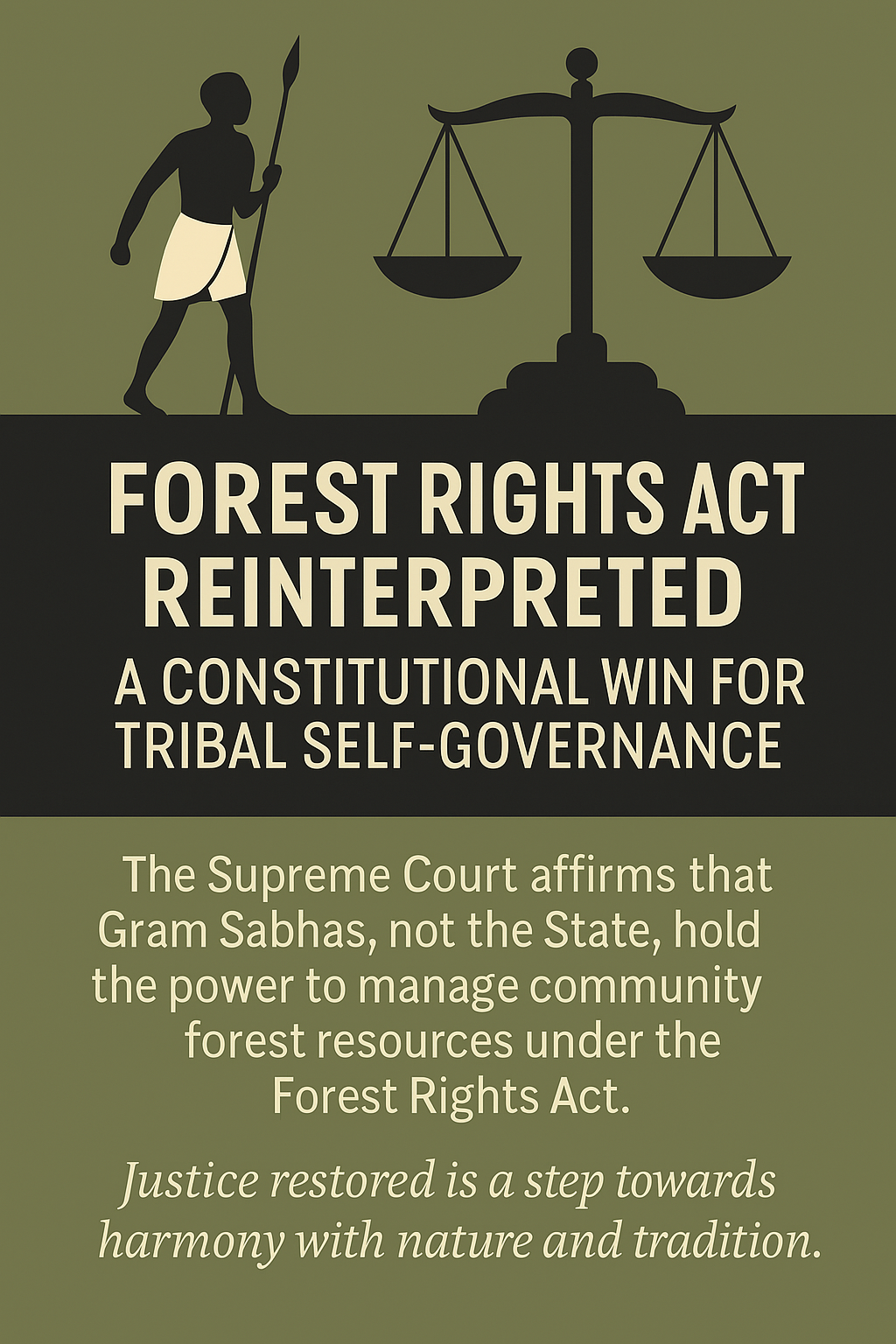
007- Apr 5 🌳 Forest Rights Act Reinterpreted – A Constitutional Win for Tribal Self-Governance

On April 5, 2025, the Supreme Court of India delivered a landmark verdict affirming the autonomy of tribal communities under the Forest Rights Act (FRA), 2006.
The ruling recognizes the Gram Sabha — the village assembly — as the final authority in matters of forest land governance, minor forest produce rights, and community resource management.
This decision is being hailed as a resurgence of tribal dignity, long suppressed by colonial laws and bureaucratic overreach.
📜 What is the Forest Rights Act (FRA), 2006?
The Scheduled Tribes and Other Traditional Forest Dwellers (Recognition of Forest Rights) Act, 2006 — commonly called the Forest Rights Act (FRA) — was enacted to correct historical injustices done to tribal and forest communities.
It gives them legal recognition over:
- Land rights
- Minor forest produce
- Community forest resources
- Rights to protect, regenerate, or manage forests
It recognizes that forests are not just timber zones — they are homelands, sacred grounds, and lifelines.
⚖️ What Did the Supreme Court Rule in April 2025?
- Affirmed that Gram Sabhas have veto power over forest land decisions
- Invalidated state forest departments’ unilateral evictions of tribal dwellers
- Strengthened community participation in forest governance
- Directed state governments to respect customary rights while implementing development or conservation projects
🧠 Why Is This Important?
- Empowers the democratic grassroots — Gram Sabhas
- Upholds Constitutional values: justice, liberty, equality
- Balances environmental sustainability with tribal livelihood
- Strengthens India’s commitment to inclusive governance
🧭 Relevance for Exams
- GS2: Polity, Governance, Role of Judiciary
- GS3: Environment, Conservation, Tribal Affairs
- Essay: “Development must walk beside dignity”
✨ Conclusion
“The forest speaks through its people. This verdict allows the echo of centuries to be heard again.”
The Forest Rights Act was always a law of restoration. Now, with the Supreme Court’s reaffirmation, it becomes a living promise — not just on paper, but in the soil, leaves, and lives of India’s forest communities.


















